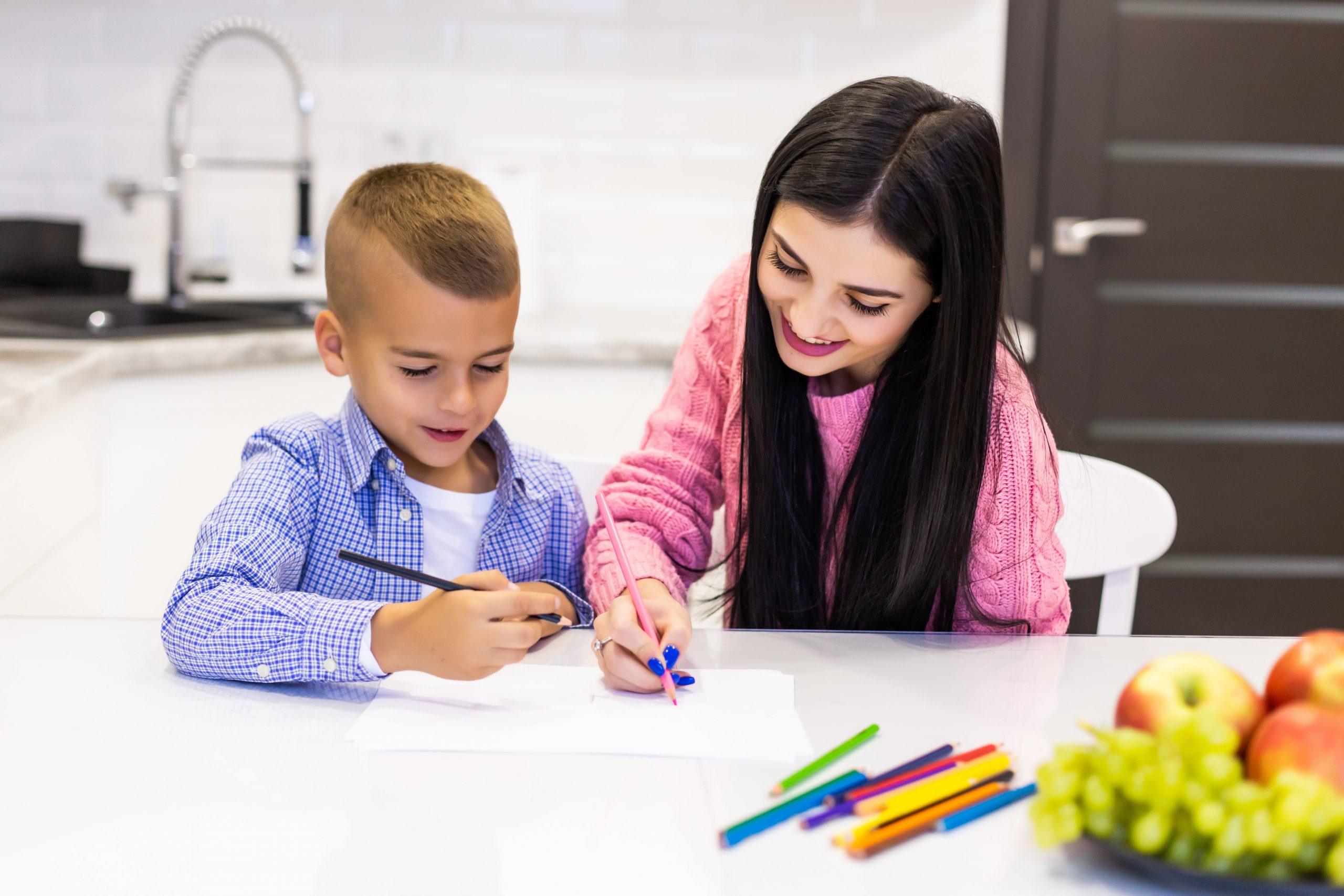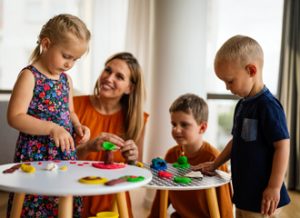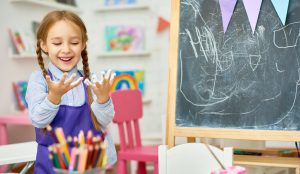Give mealtime a math infusion
Do your kids like to help out in the kitchen? Meal prep is the perfect time to get children counting, measuring, estimating, comparing, and recognizing shapes. Ask your child to measure and count cups of ingredients, count how many plates and utensils are needed for the whole family, and figure out who has more or less mashed potatoes. Get creative with math during cleanup time, too: you can have your child name the shapes of the dishes and sponges, count the number of steps they took to complete the cleanup task, and predict how many dishes will fit in the dishwasher. (Want more ideas? Download this free tip sheet for 24 ways to have fun with math at home.)
Supercharge your storytimes
Your daily book reading sessions are golden opportunities to actively build early literacy skills. To boost vocabulary knowledge, watch for words you think your child may not know and briefly define and talk about them. When you reread a book, ask your child if they remember what the word means, and try to use the new words at other times of the day to reinforce knowledge. To build letter recognition skills, try pointing to letters as you say their names, singing a slowed-down ABC song while you point to each letter in the book. Turn to random pages in the book and see if children can name and point to the letters themselves. You can follow up by having your child make their own ABC book, finding or drawing pictures for each letter.
Reread all your child’s comfort books
At times like these, when you’re home together and it seems like life is slowing down, sink into some comfort rereads of favorite picture books. Kids love hearing the same book many times, and the repetition is actually beneficial to their developing literacy skills, since it gives them multiple chances to absorb the language of the book. If you want to make the most of repeated readings, choose high-quality books with words that stretch your child’s vocabulary and language knowledge.
Make a museum
Your child’s favorite museum might be closed to the public right now, but they can make one at home with a little imagination and a few simple materials. If your child has collected little treasures over the years (rocks, shells, toy dinosaurs, buttons, etc.), show them how to arrange their collections in themed displays using shoe boxes, small jars, or egg cartons. Help children label their treasures—a great way to practice letter writing and recognition—and build their language skills by encouraging them to give “tours” of their personal museum to visitors. (Also, did you know that many museums are giving free virtual tours right now? Here’s a list of them, and here’s a link to the kid-friendly online tour of the Metropolitan Museum of Art. While you’re teaching young children at home, a virtual museum tour might be a fun way to spark conversations about art and history.)
Start a language-rich restaurant at home
If your family eats out regularly, kids might be missing the interesting change in routine that a restaurant offers. Why not start a restaurant at home, and use it to help teach language and literacy skills? Stock your play area with empty boxes, food containers, and restaurant props with writing on them, such as takeout menus, placemats, or a newspaper circular. Read the menu with them, or help them create their own menus from scratch. Help kids make a sign with their restaurant’s name. As children play, point out words on the restaurant props and encourage them to spot familiar letters and words.
Create a dedicated writing center
To make writing/prewriting activities inviting to young children, designate a table or desk as your home’s “writing center.” Fill it with open-ended materials that invite exploration and experimentation. Offer kids blank paper in different colors, a small dry erase board, markers, crayons, pencils, scissors, glue sticks, hole punches, and envelopes. Kids who have a variety of materials on hand will be more likely to initiate self-directed writing projects.
Measure their masterworks
Are your kids passing the time by making a long cardboard road for their cars, or building a tall tower with blocks? Dig out your ruler and incorporate a little measurement lesson into their play. Show them how to use the ruler to measure the length of their road or the height of their tower. They might have fun predicting how many inches long or feet high their creations are.





